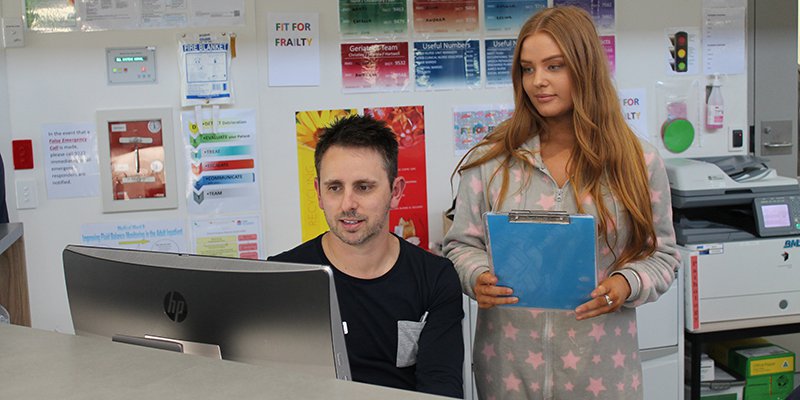Staff swap uniforms for PJs … all in the name of improving care for people living with frailty

Staff at Shellharbour, Shoalhaven and Wollongong Hospitals have swapped work uniforms for their pyjamas as part of an initiative aimed at encouraging patients to get out of bed, into their day clothes and move around more while in hospital. The campaign, known as #endPJparalysis, aims to create awareness of bed rest and why it’s not always the best medicine.
Illawarra Shoalhaven Local Health District’s (ISLHD) Co-Director of the Division of Medicine, Associate Professor Spiros Miyakis, said “bed rest can often cause unintended harm to patients who are already frail.”
“We know that just 10 days of bed rest in a hospital setting can age muscles in older patients by a massive 10 years. This rapid muscle deconditioning means patients can quickly become weaker, and it can take twice as long to get back on their feet. This can lead to other health problems and even longer hospital stays, so we are looking at ways to get patients up and about and reduce the risk of this cycle where possible,” he said.
#endPJparalysis is an international campaign founded by UK Professor Brian Dolan. It aims to encourage patients who are well enough to get up, get dressed and get moving. Research has shown that by better supporting patients to wear their day clothes while in hospital, recovery is boosted and they can return home and to their regular routines more quickly.
ISLHD Project Nurse Lead, Megan Foye said “#endPJparalysis will be trialled throughout the District to gauge the benefits for local patients. Staff have come to work in their nightwear to get a better understanding of how vulnerable patients can feel wearing their PJs all day.”
“It’s a common misconception that pyjamas should be worn at all times in hospital. We want patients, their families and staff to know that establishing a routine of getting up and out of bed to get dressed has been proven to assist recovery. Wearing pyjamas all day can often reinforce feeling unwell, while clothes say a patient is getting better,” Ms Foye said
“We want to get patients back on their feet as quickly as possible so they can maintain strength, confidence and routine during their hospital stay allowing them to get back to their families and loved ones as soon as possible,” she said.
This initiative is one of the projects currently being rolled out in hospitals across the Local Health District, part of a larger focus on improving how we care for patients who are frail. The District’s Fit for Frailty Program is looking at all aspects and challenges of the frail person’s journey. This will allow us to develop systems and approaches that ensure that ISLHD is fit to care for frail people now and into the future.
Management of older people with frailty has been identified as a challenge. Locally, over 75 year olds make up nine per cent of the Illawarra Shoalhaven population, and while not everyone over 75 is frail, this age group accounts for 16 per cent of Emergency Department (ED) presentations, 60 per cent of falls and 43 per cent of medication issues. We also see higher rates of frailty in our Aboriginal and Torres Strait Islander population from the age of 55.
“Taking all of this into account, reconsidering how we as a system treat our frail and elderly patients is crucial. The early identification of people with frailty, appropriate treatment plans, and improved access to internal and external services are the key enablers for ensuring people with frailty are cared for in the right place and at the right time,” said Associate Professor Miyakis.
